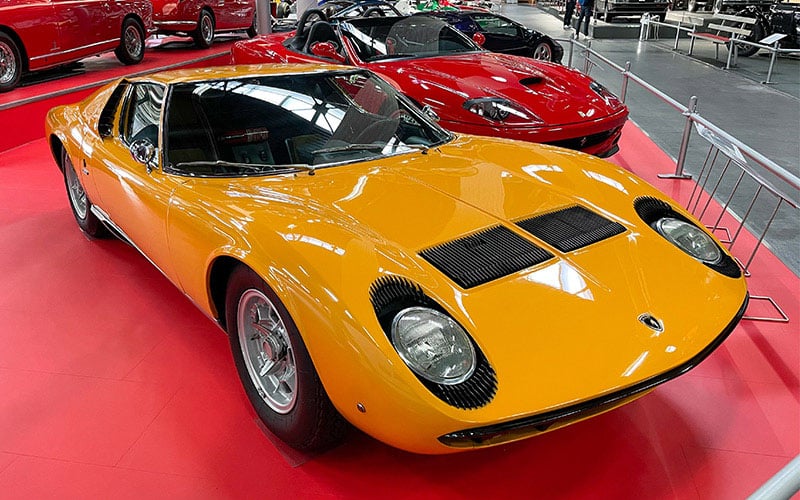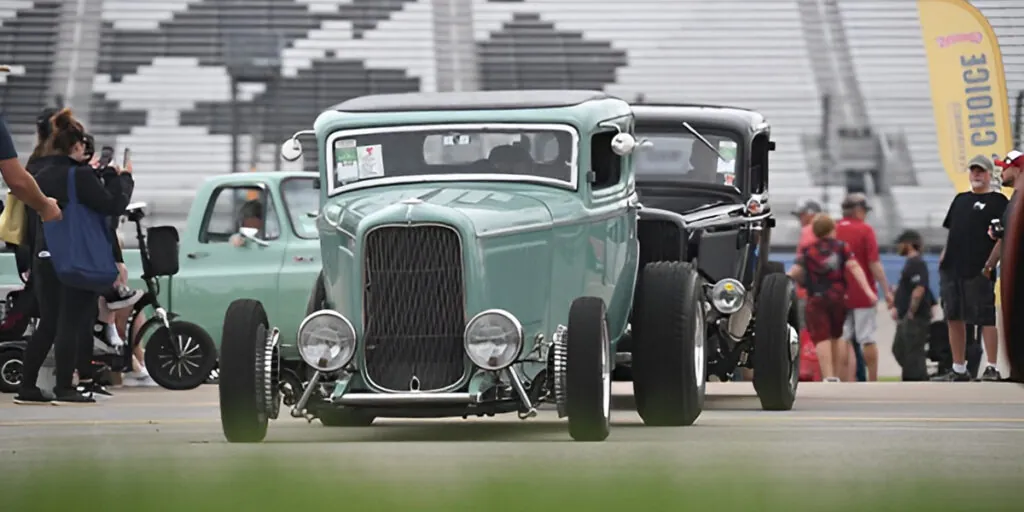When thinking about classic cars of the 1960s, a particular quote comes to mind: “With the right kind of eyes,” Hunter S. Thompson once wrote, “you can almost see the high-water mark—that place where the wave finally broke and rolled back.” Unsurprisingly, he was talking about the Sixties, the decade that produced so many all-time great automobiles on both sides of the Atlantic. For many automotive enthusiasts, it really was that high-water mark – the last golden moment before emissions laws, crash regulations, economic troubles, and what we now know as “malaise” made their grim appearances on the scene.
Classic Car History: Great Cars Throughout the Sixties

You can’t talk about classic cars from the 1960s without discussing muscle cars and pony cars, the two critical market segments that were born during that decade and continue to shape automotive desires to the present day. Yet it was also a golden age for sports cars and grand tourers. Led by the 1963 Chevrolet standard sedan, family cars also experienced an aesthetic and functional renaissance. We can’t forget the Lamborghini Miura, which debuted in 1966 and set the standards for supercars to this very day. And if you’re a fan of BMW, then you know that the fabled BMW 2002 was designed and released near the end of the decade.
Today, the powerful legacy of the automotive Sixties can be felt at every auction, every vintage race, and every concours on the calendar. Just hitting the highlights of the era will take the reader around the globe and through every sort of automotive enthusiasm one can imagine. We’ve assembled some of those highlights below for your enjoyment. Think of it as a roadmap you can follow to discover a new favorite car or automotive story.
1960s Chevrolet Cars
Biscayne · Bel-Air · Impala
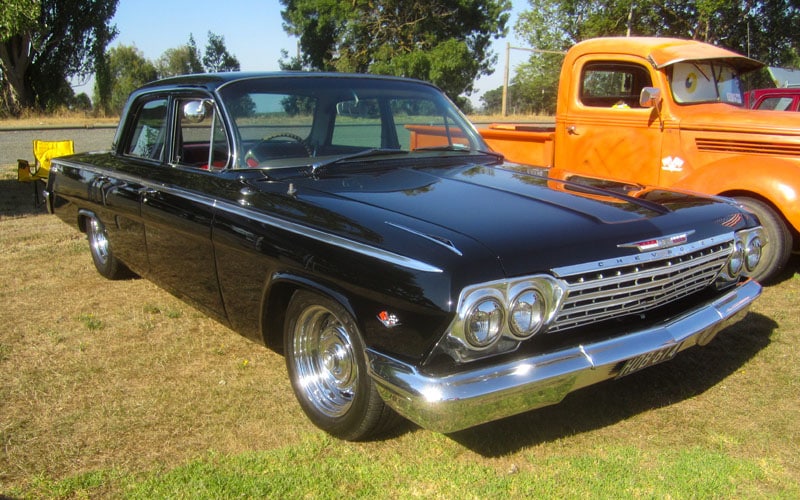
When Chevrolet put the new “Jet-Smooth” body on its traditional X-frame full-size sedan for 1963, it set a visual template for sedans that would persist all the way to the current year. Long, low, and clean, the new look of Chevrolet was so popular that the United States Government started thinking about anti-trust enforcement! And you could have it a literal million different ways, from thrifty six-cylinder taxicab Biscayne to roaring big-block V-8 Impala. It was certainly the finest and most capable automobile ever sold at an affordable price to the general public.
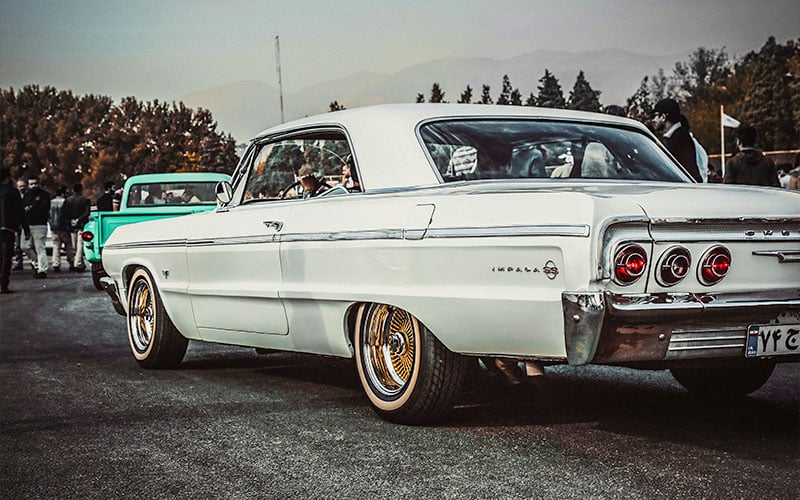
In the years afterwards, it would serve every possible purpose from East Los Angeles lowrider to 99-point concours stunner, with plenty of race cars, street rods, and family haulers in between. Thanks to astounding production numbers, good aftermarket support, and a fundamentally sound design, plenty of examples are still available on the market today. They’re capable of keeping up with modern traffic while drawing plenty of eyeballs. Two-door hardtop examples are particularly prized, but you’ll find plenty of enthusiasm out there for all the different variants.
Camaro
Not the first pony car, and maybe not even the second, the Chevrolet Camaro was nevertheless the most important one for a vast segment of America, with timeless styling and an exceptionally broad variety of powertrains. While the vast majority of Camaros sold were fairly prosaic, often with “three-on-the-tree” manual transmission behind a cooking-grade straight-six and 307CID V-8 engines, a little patience with the options sheet could get you a muscular RS/SS, a high-revving 302CID Z/28 that brought race car performance to the street, or the mighty COPO (Central Office Production Order) Camaros built for Yenko and others, with high-power big-blocks.
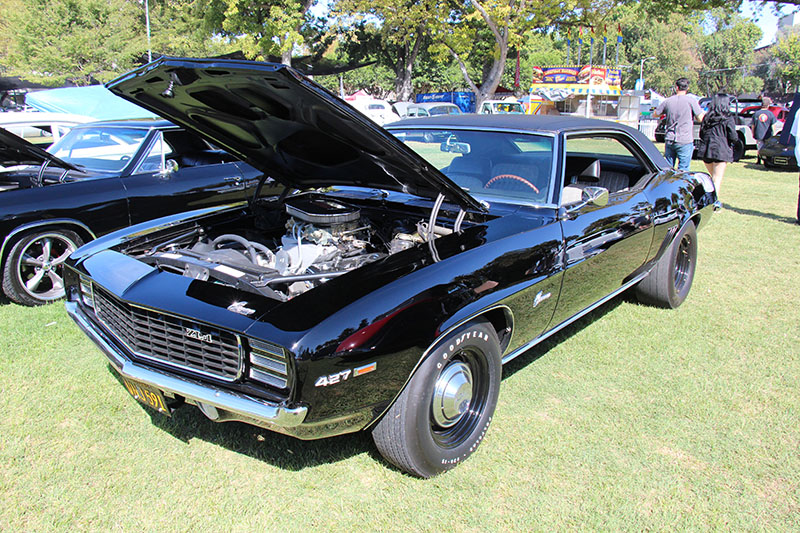
Let’s not forget the $7,200 Camaro with the $4,160.15 option, namely: the ZL1 aluminum-block 427. A new Cadillac could be had for just over five grand, so you had to really want a drag-racing superstar to spend that kind of money on a mere Chevy! Those who did were rewarded with a power-to-weight ratio guaranteed to raise eyebrows and break hearts on Mulholland Drive. Introduced as a 1967 and sold through the summer of 1969, the first-generation Camaro was the shortest-lived of any of its successors. The second-generation car of 1970 would run twelve model years and spawn plenty of classic models. When it was time to style a new fifth generation car, GM bolstered the phrase “If it ain’t broke, don’t fix it,” by turning back to the 1967 original.
Corvette
The Sixties were a critical time for the Chevrolet Corvette, America’s only long-serving sports car. Entering the Sixties with a revamped body and V-8 power over the original frame, the Corvette received the biggest makeover imaginable with the 1963 Sting Ray. It was notable for its split rear window and ultra-futuristic styling. With a small-block, the Sting Ray was a competent road-course racer and everyday driver; with the 396 or 427 big-blocks, it was an unstoppable drag-racing force packing muscle car power in a chassis up to half a ton lighter than the competition.
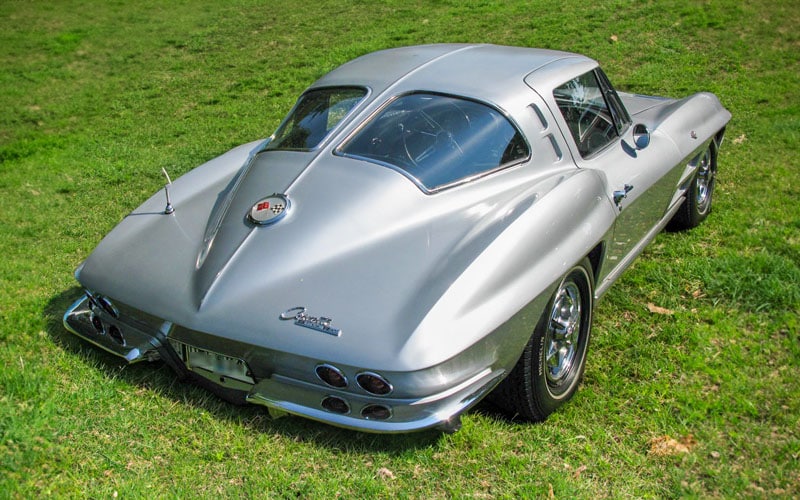
The Corvette Sting Ray wasn’t just a hit in America; it was a global success in motorsport, aided in no small part by Z06 and Grand Sport variants from the fertile and race-obsessed brain of Zora Arkus-Duntov. While they were old tech under the skin, featuring massive aluminum drum brakes when the competition was already exploring the Girling disc, the raw ferocity of their engines made up for a multitude of dynamic sins.
The high expectations for the successor of the 1968 Sting Ray were met by a design that looked like no other vehicle ever seen in America. The third generation (C8) Corvette was produced until 1982 but it was fastest and most furious, so to speak, around the end of the Sixties. The unique Coke bottle shape that defined Corvette would be unflinchingly met by GM all the way up to the debut of the eighth-generation, mid-engine Corvette five decades later.
1960s Dodge and Mopar Cars
Hemi Dart
As fast as the Corvette and Camaro were, there was one car they’d couldn’t even begin to touch on the drag strip: Chrysler’s astounding Hemi Dart. Featuring the unlikely combination of the everyday compact Dart body and the monstrous 426 Hemi V-8, the Hemi Dart was capable of ten-second quarter-mile times straight off the showroom floor. With a little prep, they were as fast as a modern Tesla “Ludicrous” or McLaren sports car. Never before and ever since was there this kind of speed gap between the quickest showroom-fresh car and second place – so much that nobody could even agree on what that second-place car would have been. Not only is the Dodge Hemi Dart among the most iconic cars of the 1960s, it could be argued it would stand out against classic cars from any decade.

Charger · Daytona · GTX · Road Runner · 300L
The full-sized Mopar was the original home of that 426 Hemi, nicknamed “the elephant motor”, and it came in versions to suit everyone’s taste, from the simple Charger R/T that became the famous General Lee car in “The Dukes of Hazzard” to the NASCAR-focused, aero-nosed Plymouth Superbird and Charger Daytona. Want a little luxury with your 400-plus horsepower? The 300L “letter car” had power windows, air conditioning, plus the ability to dust almost anything on the streets.
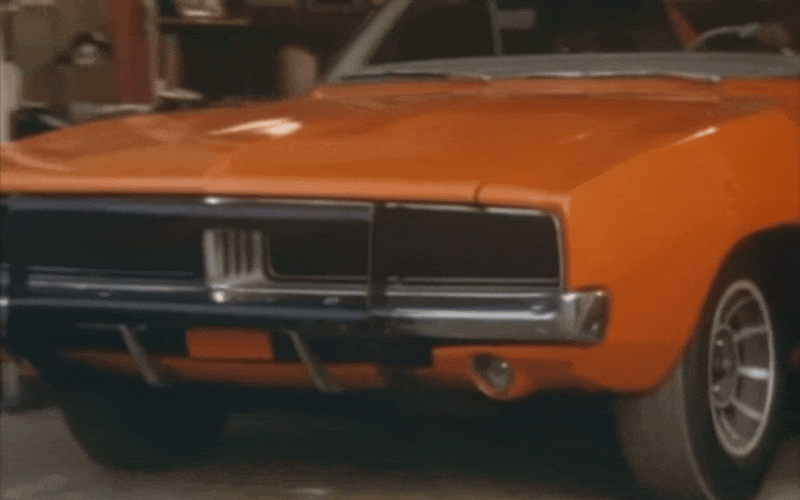
But the Hemi wasn’t the entire story. The more conventional 440ci V-8 in “Six-Pack” form was just as highly desired – and if you listen to the street racers of the era, they’ll admit that it was a lot easier to keep them running right, particularly with regards to spark plugs. A Hemi-powered 1968 Dodge Charger starred in the famous car chase scene in the Steve McQueen action film “Bullitt.”
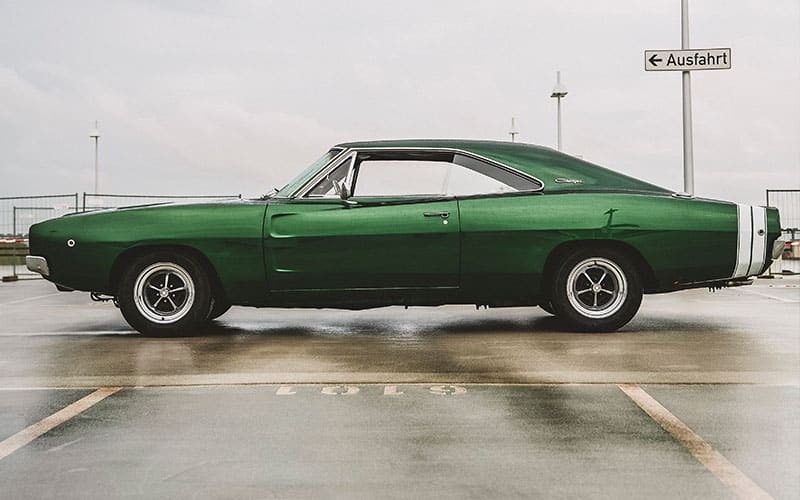
Below the six-barrel carbureted Dodge and Plymouth models you had the “plain” four-barrel 440s, which were still capable of taking on pretty much anything GM or Ford had to offer. There wasn’t a bad choice to be make in the bunch. Even the “low-priced” Plymouth Road Runner was a monster on the strip, particularly if you chose a model with a six-barrel carburetor.
Chrysler 300G
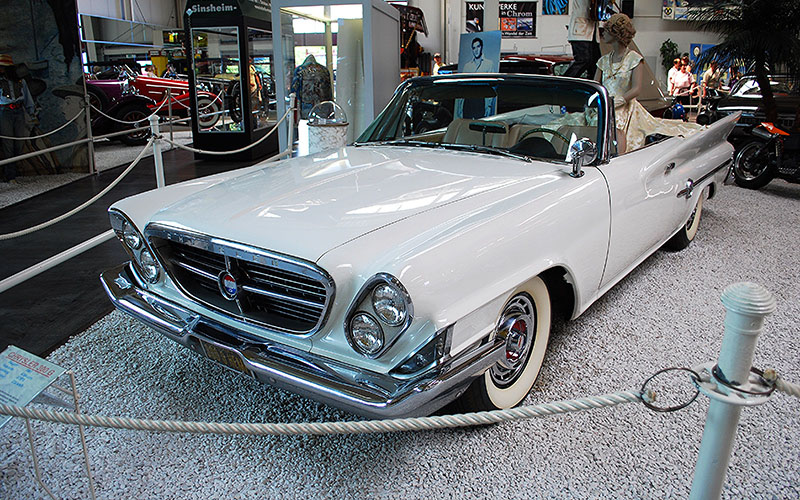
Imagine doing 143mph in a luxury car… in the early Sixties! That 1961 Chrysler 300G. The base unibody was from the Fifties, but Virgil Exners continued to restyle the “letter car” for the demands of a new generation. At a time when Cadillac and Lincoln treated performance as simply one of many demands to be met for a high-net-worth clientele, Chrysler leaned in on going fast – a legacy that continues in 2023 with the 392-cubic-inch 300C Final Edition.
Ford Cars from the 1960s
Mustang
You can’t even start talking about the cars of the 1960s without mentioning the Ford Mustang. Based on the prosaic Falcon compact, the Mustang started life as a simple restyle job – and then the demands of the market took over. Before too long, the relatively mild engine options of 1965 had been supplanted by big-blocks, high-revving race motors, and bored-out small-blocks that brought race-style performance to the daily commute.
The list of genuinely iconic Mustangs is immense; it includes the early “K-code” V-8 cars, the GT-350 racer and GT-350H “rent-a-racer” from Shelby American, the 1969 Boss 302 that would enable Ford to fight the Z/28 head-ups in the ultra-popular Trans-Am race series, and the big-block cars that traded nimbleness and road-racing competence for warp-speed thrust in a straight line. The power of the brand was such that even a low-option everyday GT model managed to become famous as the chosen car in the famous Steve McQueen film, “Bullitt.”
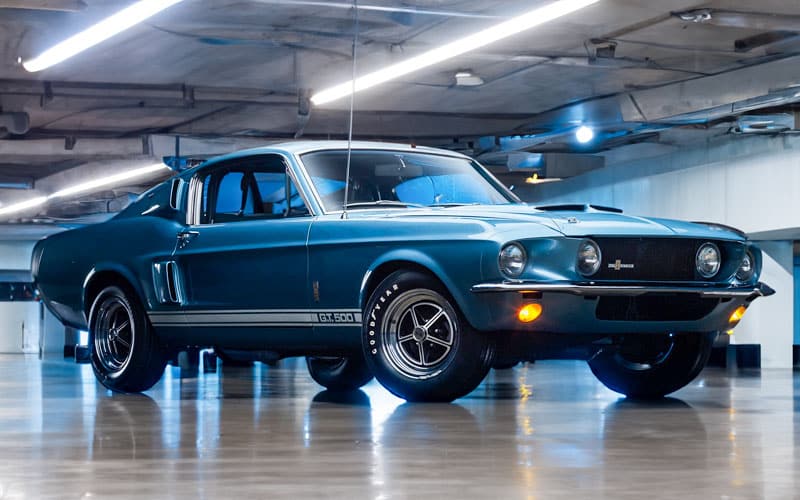
Spawning luxury variants like the Grande and sibling Mercury Cougar, the Mustang has carried the torch for Ford’s sporting efforts in an uninterrupted and admirable fashion to the current day.
Thunderbird
The “Bullet Bird” of 1961 served notice to the other members of the Big Three that Ford was serious about its personal luxury coupe. Just as importantly, it and its successors demonstrated a willingness to follow the buyers anywhere they went. So the Bullet Bird was unashamedly luxurious, spacious, and even a bit gimmicky – heady stuff for a car that was originally a direct competitor to the Corvette.
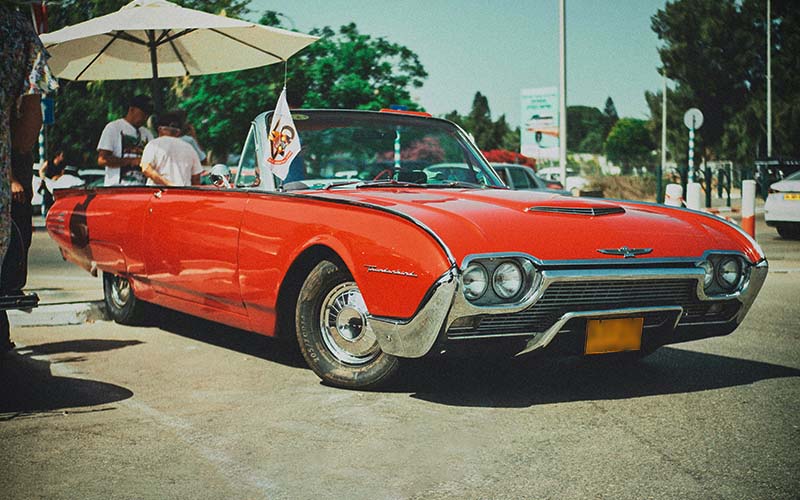
A restyling for 1964 preserved the ‘Bird qualities, but it wasn’t until 1967 that things really went crazy. Featuring pony car adjacent styling with a vinyl roof and “suicide doors” in the four door variants, the fifth-generation Thunderbird graciously adjusted to its role as big brother to the sporty Mustang. Always aimed at the grownups in the room, from 1967 forward the ‘Bird was exceptionally focused on the mission of going quickly in style. A little reflected glamour from earlier appearances in two James Bond films didn’t hurt one bit. Today, Sixties Thunderbirds are a bit of a bargain, particularly the two-door variants from 1967 forward.
Cobra 289 and 427
Carroll Shelby’s idea of putting an American V-8 in a British roadster wasn’t unique, but the AC Ace was arguably the best possible platform for such a heart transplant – and Ford gave him all the tools he needed to shine. As a narrow-bodied 289, the Cobra was a brilliant road racer; as a flared-out 427, it was desirable enough to spawn a permanent industry of replicars and wannabes. Just as importantly, the success of the Cobra made it certain that Ford would both support the Shelby Mustangs and take the fight to Ferrari at LeMans.

More Great Domestic Cars from the 1960s
Pontiac GTO
When John Z. DeLorean broke an internal GM rule about putting high-power big-block engines in “intermediate” cars, he turned the industry on its ear. While the reputation of the Pontiac GTO was arguably greater than its actual performance in street racing during the Sixties, it was perhaps the first car that was capable of scrapping with the hot rods just as it came from the showroom. By the time GM restyled its intermediate cars for 1968, the GTO was “The Great One”, made famous for all time by the film Two Lane Blacktop.

Cadillac Eldorado
The all-new front-wheel-drive Eldorado of 1967 represented one of the biggest risks ever taken by the Big Three. Directly inspired by the Cord of thirty-some years prior, the Eldorado used a unique powertrain to go with its unique styling. Arguably the most handsome luxury car ever sold by an American brand, the Eldorado took the advances of the previous year’s Oldsmobile Toronado and coupled them with iron-clad upscale credibility. The 1967 Cadillac Eldorado easily earns its spot among iconic classic cars of the 1960s. The Eldorados that followed would not always represent the marque well, but the 1967 car was flawless.
AMC AMX
By the Sixties, American Motors was already struggling to match the styling and development budgets of their larger competitors. How did they close the gap? Through original and daring thinking. Consider the AMC AMX, which cut the wheelbase of the Javelin to create a two-seater that was somehow a sports car, a grand tourer, a drag racer, and an everyday intermediate – all at once. The wheelbase was Corvette-equivalent, and its performance was robust thanks to an all-V-8 powertrain lineup. The AMX deserved to be a hit, and it was.
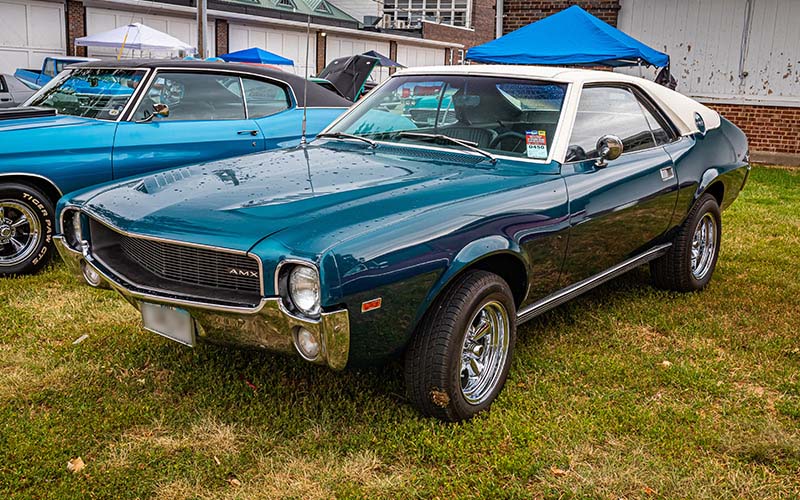
Global Superstars from the 1960s
Jaguar E-Type
If there is such a thing as the perfect sports car, could it be the Jaguar XKE, sold in the U.S. as the Jaguar E-Type? Certainly, the beauty and proportions of the Jag are nearly impossible to match – but at the same time, it was capable of fighting with Ferraris, Corvettes, and Cobras on the road course. An early adopter both of disc brakes and aero-centric styling, the XKE was absurdly quick in all conditions. It would have been difficult to improve on something so close to perfect, which is perhaps why the Jaguar E-Type moved into a grand-tourer role by the end of the decade, when it would get V-12 power and a model mix that heavily favored the 2+2-seat variants.
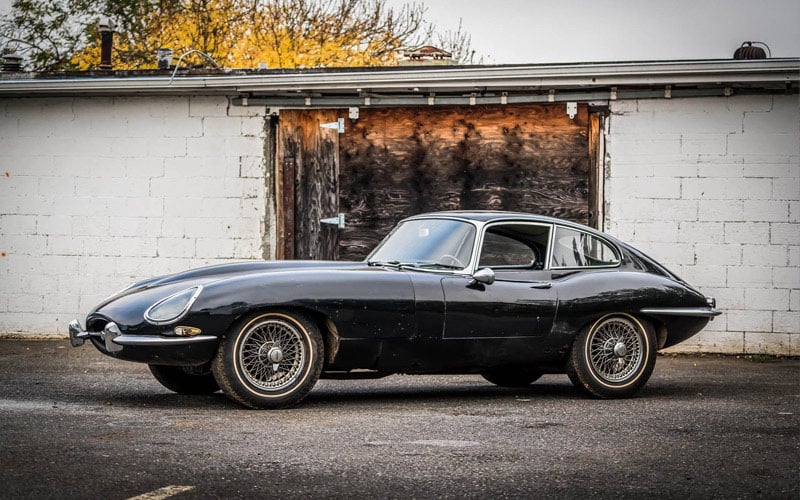
Ferrari 250GTO
A perennial resident of “World’s Most Valuable Car” lists, the GTO had its roots in international sports-car racing and was originally conceived as simply a way to utilize new aerodynamic knowledge. The combination of new body and existing V-12 engine was an immediate hit. Very few cars can boast as storied a competitive history – and fewer still have looks to match.
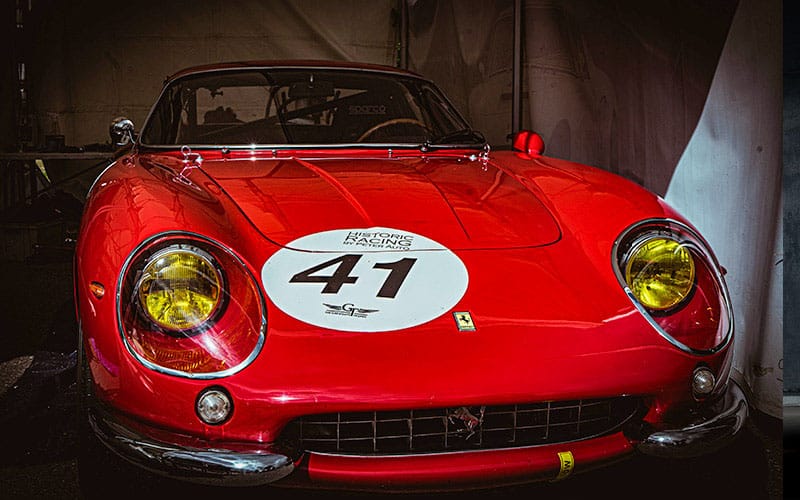
BMW 2002
It’s not an exaggeration to say that the entire BMW brand is built on this simple but delightful two-door sedan with an engine that is just a little bigger than it needs to be. Far from being the first sports sedan – heck, it’s not even the first BMW sports sedan – the 2002 had that magic combination of speed, flickability, and upscale appeal, making it one of the most iconic cars of the 1960s. Mercedes is famous for the S-Class, and Porsche for the 911, but BMW enthusiasts tend to get most excited about slightly overpowered, upright-looking two-doors. Blame that on the BMW 2002.
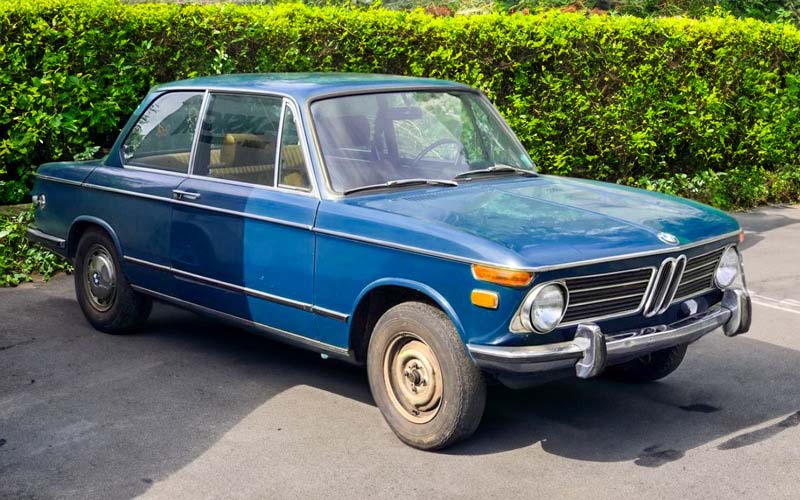
Lamborghini Miura
If the Ferrari 250GTO was the ultimate front-engine Italian sports car, then the Lamborghini Miura was something else entirely – a spaceship with the engine behind the driver at a time when Formula 1 was still coming to terms with that configuration. It looked like nothing else in history, and it had performance to back up its looks. Prior to its existence, the word “supercar” had been used to mean a dozen different things, even a big-bore American sedan – but after the Miura appeared on the auto-show turntable, “supercar” would forever mean a two-seater with massive mid-engine power and avant-garde styling. Today’s Lamborghinis are unashamedly inspired by it, as is everything from the Ferrari F8 to the new Chevrolet Corvette.
